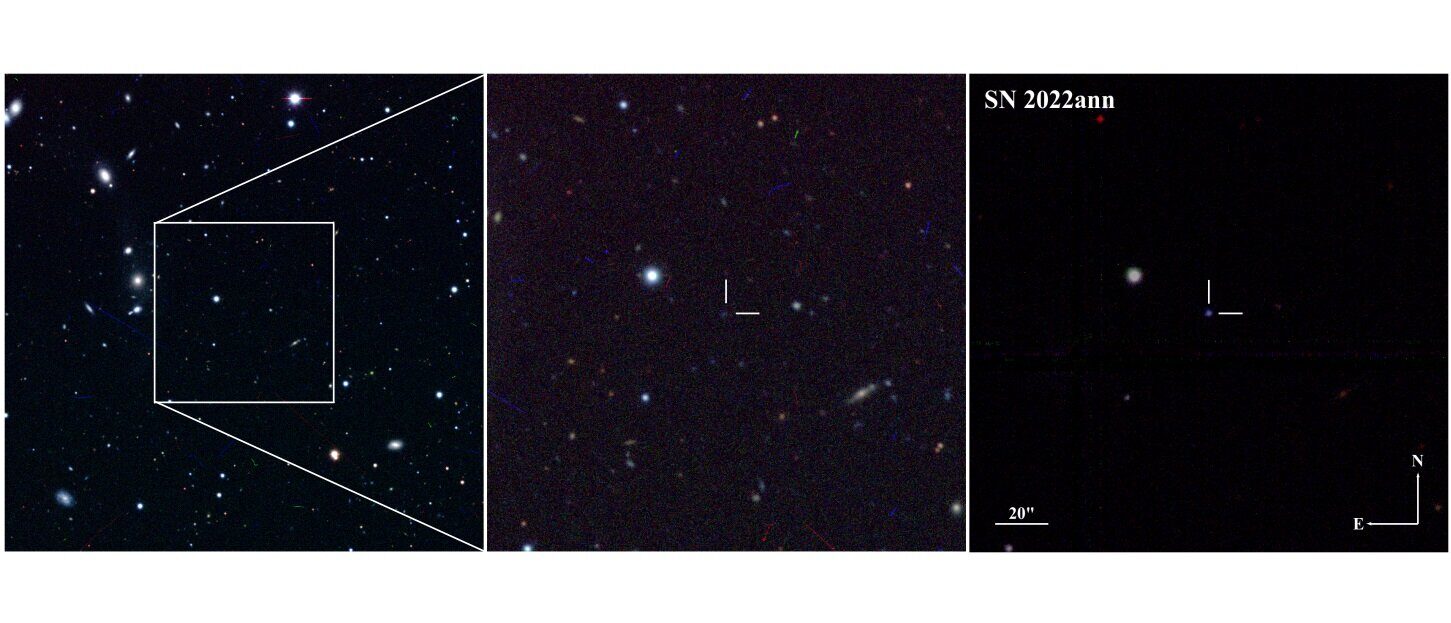
Supernovae (SNe) are powerful and luminous stellar explosions. They are important for the scientific community as they offer essential clues into the evolution of stars and galaxies. In general, SNe are divided into two groups based on their atomic spectra: Type I and Type II. Type I SNe lack hydrogen in their spectra, while those of Type II showcase spectral lines of hydrogen.
Type Icn SNe are an extreme subtype of interacting stripped-envelope supernovae (SESN). They have strong, narrow oxygen and carbon lines but weak or absent hydrogen and helium lines, presenting additional complications to the stripping mechanism. They have narrow emission features indicative of circumstellar interaction.
To date, only five Type Icn SNe have been discovered, and SN 2022ann is the latest addition to the short list of this SN subtype. SN 2022ann was detected on January 27, 2022 in the faint host galaxy SDSS J101729.72-022535, at a distance of about 710 million light years.
Shortly after the explosion, a team of astronomers led by Kyle Davis of University of California, Santa Cruz, commenced photometric and spectroscopic monitoring of SN 2022ann using various ground-based facilities.
"We have presented optical photometry and optical/NIR spectroscopy of SN 2022ann, the fifth reported SN Icn, and its host galaxy, SDSS J101729.72-022535.6. (...) Our observations of SN 2022ann provide unique insight into the origins of the rarest SN explosions, and undiscovered endpoints of stellar evolution," the researchers wrote in the paper.
The observations show that early optical spectra of SN 2022ann are dominated by narrow carbon and oxygen P-Cygni features with absorption velocities of around 800 km/s. This is slower than other SNe Icn and below the escape velocity for a compact massive star that is necessary to avoid strong hydrogen emission. Therefore, the astronomers suggest that the progenitor star of SN 2022ann may have been "puffed up" by an outburst and out of hydrostatic equilibrium before explosion.
The study found that SN 2022ann has a uniquely constant brightness at early times after the explosion and a relatively rapid late-time decline in redder bands after this plateau. Moreover, SN 2022ann at peak has a relatively low luminosity compared to the other four known Type Icn SNe. Based on the bolometric light curve of SN 2022ann, the researchers estimate that its ejecta mass is at a level of 1.73 solar masses.
According to the researchers, all the results suggest that a binary star companion is required to adequately strip the progenitor before explosion and produce a low-velocity outflow such as the one in SN 2022ann. They added that the rarity of SNe Icn may indicate that they are created during a brief or uncommon stage in binary evolution.
More information: K. W. Davis et al, SN 2022ann: A type Icn supernova from a dwarf galaxy that reveals helium in its circumstellar environment, arXiv (2022).



Reader Comments
to our Newsletter